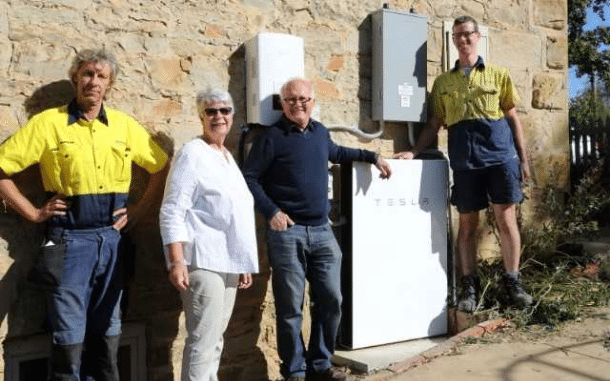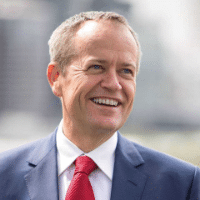The federal Labor Party will roll out solar battery rebates for up to 100,000 households as part of an ambitious renewables program if it wins the next general election.
Labor will also reintroduce the National Energy Guarantee (NEG) shelved by the Coalition. However, it will add a higher emissions reduction target of 45 per cent by 2030, based on 2005 levels.
Solar, wind and hydro electric projects will also receive a major boost under the Labor policy announced today. The next Federal election is most likely to be held before the middle of 2019.
Solar battery rebates backed up by solar panel support
Labor leader Bill Shorten believes increased battery storage will improve the reliability of the national electricity grid.

As reported by ABC News, the party will introduce means-tested $2,000 solar battery rebates for up to 100,000 homes.
The $200 million program will triple the number of homes using solar batteries like Tesla Powerwall 2 and Enphase for storage.
According to Shadow Energy Minister Mark Butler, this will ease pressure on the grid by reducing demand at peak times. Battery owners can then use stored energy to run air-conditioners or heaters when they return home in the evening.
Labor is also promising to help lower-income households access solar installations at a cost of $100 million, ABC News reports.
An industry insider warned that for SA and Victorian residents who are thinking of purchasing home batteries now, the message would be “don’t wait”.
These states offers generous subsidies already. These are unlikely to be offered in conjunction with the federal offer if Labor is elected.
Bill Shorten’s promise of solar battery rebates is only for 100,000 homes, out of nine million private dwellings in Australia.
This means that there will be a very limited number of beneficiaries. The offer will be means tested, so many people with the ability to afford a battery now may not be eligible for any benefit from the program.
Resurrecting the NEG could reinstate bipartisan politics
Prime Minister Scott Morrison abandoned the party’s flagship energy policy – the National Energy Guarantee – when he replaced Malcolm Turnbull in the top job in September.
Coalition conservatives led by former PM Tony Abbott had long claimed NEG emission reduction targets were too high.
The NEG aimed to reduce emissions by 26 per cent on 2005 levels by 2030. Federal Labor’s plan to increase the target to 45 per cent by 2030 could get the parties talking again about the policy again.
Seventy per cent of Australians want a more ambitious emissions target, according to a Greenpeace poll carried out in July.
Sixty per cent also say wind and solar power will provide most of the nation’s electricity by 2030.
Clean energy finance boosted by Labor pledge
Labor has also pledged $10 billion to the Clean Energy Finance Corporation (CEFC).
The CEFC is the Australian government’s clean energy financing arm. It finances a range of renewable energy and sustainable technology projects across the nation.
Meanwhile, Clean Energy Council Chief Executive Kane Thornton has praised Labor’s plan. Thornton also welcomed the battery program’s focus on safety, quality and training.
He said Labor’s clean energy policies will keep the wave of large-scale clean energy investment rolling.













































